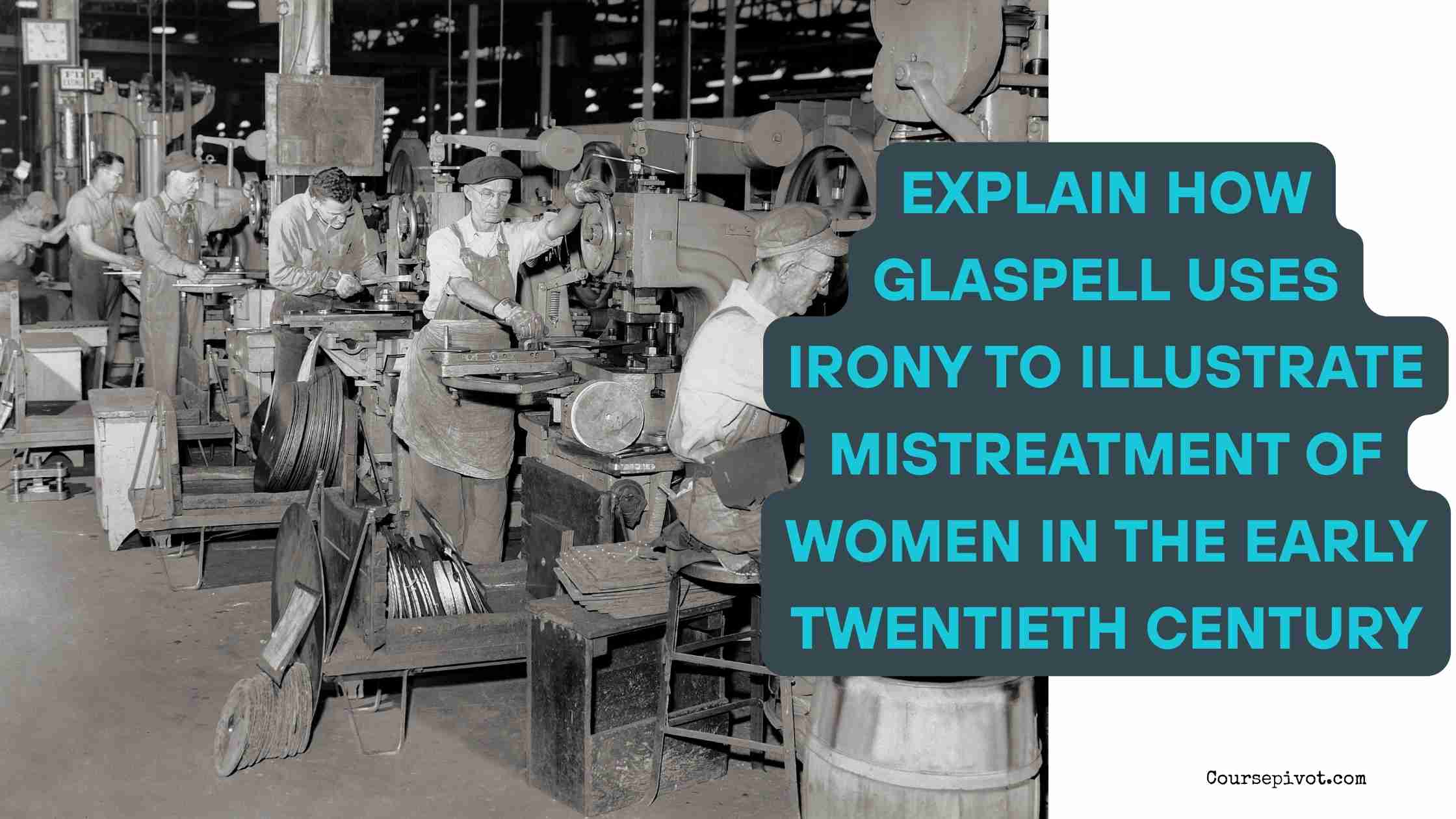
Explain How Glaspell Uses Irony to Illustrate Mistreatment of Women in the Early Twentieth Century
At first glance, Susan Glaspell’s Trifles seems like a quiet, domestic play about a rural murder investigation. But under the surface, it is a sharp and deliberate indictment of how women were misunderstood, marginalized, and mistreated in the early twentieth century. Through carefully crafted irony, Glaspell delivers a bold feminist message without needing to say it outright.
Table of Contents
Let’s explore how Glaspell uses irony to illustrate the mistreatment of women—and why it still matters.
Irony as a Feminist Weapon
Irony is one of the most effective literary tools Glaspell uses to critique gender inequality. In Trifles, the central irony is this: while the men mock the women for focusing on small domestic details, those very “trifles” lead the women to discover the motive behind the murder.
The men laugh, belittle, and dismiss. They assume that the women’s observations—about sewing, preserves, and birdcages—are meaningless. But Glaspell flips that assumption on its head. The women’s so-called trivial insights become the only meaningful discoveries in the case.
That is not accidental. That’s strategic irony. The audience sees it. The women feel it. The men, of course, remain clueless.
The Title “Trifles” Is Irony in Itself
Glaspell chose the title Trifles for a reason. It’s a direct reference to what the men in the play—and society at large—considered to be the proper sphere of women: unimportant, secondary, and domestic.
Throughout the play, the men say things like:
“Well, women are used to worrying over trifles.”
They don’t realize the depth behind these so-called trifles:
- A broken birdcage
- Uneven sewing in a quilt
- A dead bird hidden in a box, its neck wrung
Each of these clues reveals emotional neglect, isolation, and psychological abuse. These are signs the men overlook entirely, blinded by their own arrogance.
The irony is clear: the things they consider too “womanly” to matter are exactly what solve the mystery.
- Read our article on Explain How Relaxing andor Laughing Helps to Reduce Stress
The Men Search for Law, the Women Find Justice
Another layer of irony lies in the investigation itself. The men are there to find legal evidence, to enforce the law. They search the barn, the bedroom, and the outbuildings—places they believe serious evidence will be found.
Meanwhile, the women stay in the kitchen, the place of “nothing important.” And it is here, in this overlooked space, that the truth is revealed.
Glaspell uses situational irony to show that the women—those expected to know the least—actually know the most. The men’s authority is undermined by their blindness to female experience. They fail because they think too little of the very people who hold the key to the case.
The Silent Verdict
Perhaps the most powerful irony comes at the end of the play, when the women choose not to share their discovery. They understand what Mrs. Wright endured. They see that she lived a life of loneliness, loss, and quiet suffering—conditions that led her to snap.
And yet, the men never hear the story. The women say nothing. They withhold the evidence not out of deception, but out of quiet solidarity. That silence is its own form of justice. It is an act of resistance.
This is dramatic irony at its finest. The audience knows what the men do not. We see the truth that they never will.
Glaspell’s Historical Context
Written in 1916, Trifles reflects a time when women were still fighting for basic rights—like the right to vote, to own property, or to be heard in courtrooms. Women’s opinions were not trusted. Their pain was not acknowledged.
Glaspell doesn’t scream these injustices. She lets them unfold subtly, through a quiet kitchen conversation. That quietness, too, is ironic—because it’s louder than any courtroom speech could ever be.
- Read our blog on Explain the Difference Between Physical Activity and Exercise
What’s the Real Message?
So, how does Glaspell use irony to illustrate the mistreatment of women in the early twentieth century?
She does it by showing us a world where the voices of women are ignored, and then letting those same voices uncover a truth the men cannot see. She uses the men’s ignorance against them, and she lets the women’s empathy and understanding become the real source of insight.
The ultimate irony is this: the world that saw women as weak and irrelevant was blind to its own failure—and Trifles makes sure we never forget it.
Cite this article
You can copy and paste your preferred citation format below.
Martin, L. & Arquette, E.. (2025, May 23). Explain How Glaspell Uses Irony to Illustrate Mistreatment of Women in the Early Twentieth Century. Coursepivot.com. https://coursepivot.com/blog/explain-how-glaspell-uses-irony-to-illustrate-mistreatment-of-women-in-the-early-twentieth-century/



